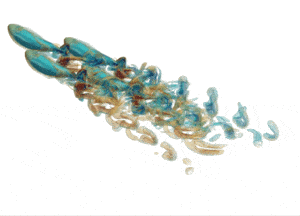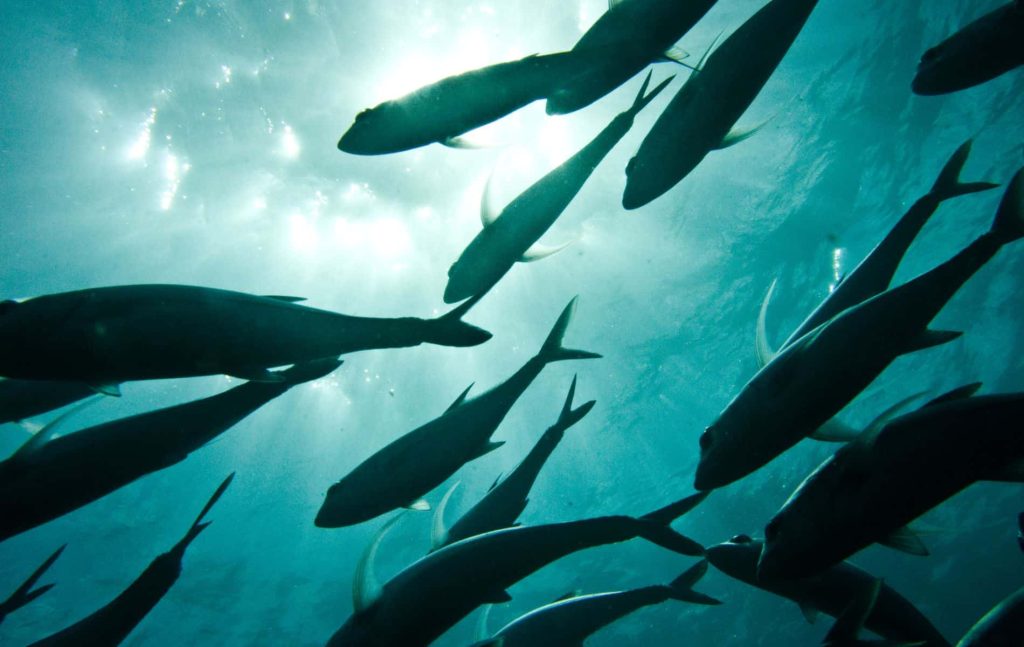How can you (as a fish) make sure you are making as little noise as possible? The answer to this question is simple – but that doesn't make it any less special. For example, a recent study revealed that fish can cancel each other's noise by swimming in groups.
The new research is clear: For fish, there are many benefits to swimming in a group — benefits that go beyond just safety. Scientist Ji Zhou contributed to the research. “We have found that reduced noise does not come at the expense of swimming ability,” Zhou added. “This makes it possible for the fish to move much farther on each tail stroke due to the hydrodynamic interactions between different fish in the group.” Zhou says that by swimming in groups, the fish can Ultimately, achieving higher speeds while consuming less energy.The research was published in the journal Bioinspiration and biomimicry.
Like a fish in water
Scientists were able to make this discovery using advanced computer simulations. During these simulations, the waves produced by mackerel fish while swimming were simulated. If these waves are parallel, they can reinforce each other. The opposite is also true: non-parallel waves can (to a large extent) cancel each other out. Scientists have discovered that this also applies to the noise that fish eventually produce underwater. Fellow scientist Rajat Mittal contributed to the research. “Sound behaves like a wave,” Mittal explains. If two waves are parallel, they can reinforce each other. These waves can also cancel each other out when time runs out. And that's mainly what's going on here – even though we're talking about quiet sounds that people can barely hear. Fish do not have to coordinate their tail strokes with each other; Simply swimming close together is more than enough.
Scientists created two different animated images to better illustrate the above point. In the first animation, four fish are swimming next to each other and their tails are not moving simultaneously. This animation shows the calmer configuration. If you look at the simulated waves, you can clearly see what happens: they eventually seem to cancel themselves out and disappear from the simulation. In the second simulation, the fish swim in a diamond pattern and their tails move back and forth at the same time. This results in much “thicker” simulated waves. It's important to mention that although there are only four fish visible in these images, the scientists ran their own simulations to study (of course) adding more fish. During these simulations with multiple fish, scientists discovered that a group of seven fish could eventually make the same amount of noise as a single fish.

School formation
The research findings are important because they provide an additional explanation for school composition. “It is known that fish can protect themselves better against predators when they swim in a group,” explains Mittal. These results show that there is a significant reduction in the amount of noise you make while swimming. Therefore, a hunting animal, such as a shark, can mistake a group for a single fish. This could be an important advantage for predatory fish, and we think it may have contributed to the formation of schools of fish.
In the research itself, scientists remain highly critical of their work. For example, they point out that “in real life” fish don't always swim close to each other, but it's entirely possible for some fish to suddenly change direction. Additionally, not all fish have the same tail beat frequency, but some fish may move their tail a little faster – or slower – than normal within a group. These are important factors to consider, because this kind of “imperfections” can end up creating a lot of hype. The scientists say they want to use simulations in which the fish can move more “freely” in future research. Not only that; They also want to add ocean turbulence as a new variable.

“Coffee buff. Twitter fanatic. Tv practitioner. Social media advocate. Pop culture ninja.”











More Stories
“Ask at least one question in return.”
According to research, people with this sleep rhythm live longer.
13 municipalities in the province of Seville have mosquitoes carrying the Nile virus